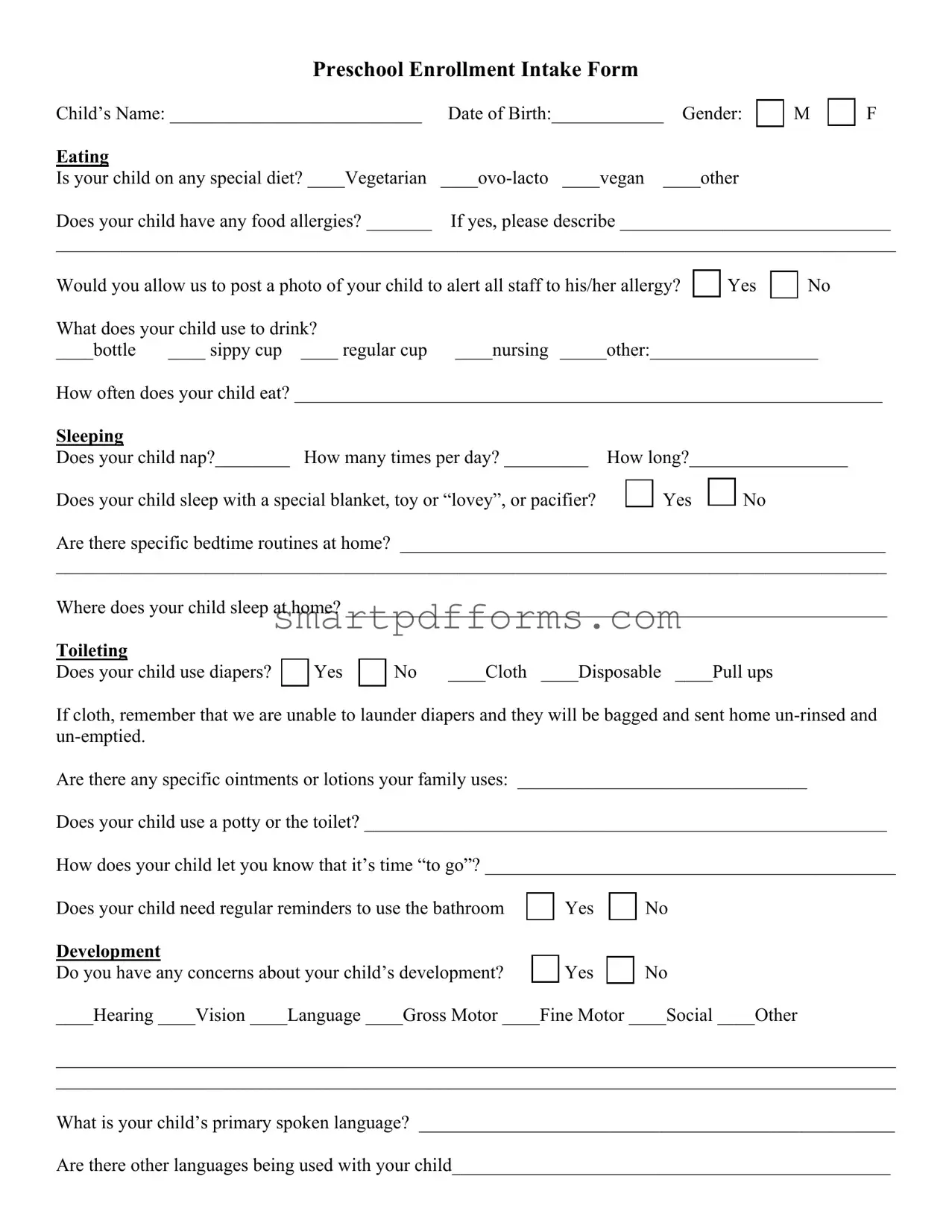What is your child’s regular routine when at home? ______________________________________________
__________________________________________________________________________________________
Is there anything we should know about your child's play with other children, by themselves, any concerns?
__________________________________________________________________________________________
__________________________________________________________________________________________
What kinds of activities does your child enjoy? Are there activities your child avoids?
__________________________________________________________________________________________
How would you describe your child’s temperament and personality? _________________________________
_________________________________________________________________________________________
Does your child have any siblings? ____________________________________________________________
Does your family have any pets? _______________________________________________________________
What soothes your child? _____________________________________________________________________
__________________________________________________________________________________________
__________________________________________________________________________________________
What frightens your child? ____________________________________________________________________
__________________________________________________________________________________________
__________________________________________________________________________________________
Does your child have any favorite songs or games that comforts them?_________________________________
__________________________________________________________________________________________
__________________________________________________________________________________________
What are your expectations or hopes for your child at our child care center?
__________________________________________________________________________________________
What are your expectations for the Children's Center and Center staff members?
__________________________________________________________________________________________
__________________________________________________________________________________________
Is there anything regarding your family, extended family or child that you would like to share with us?
__________________________________________________________________________________________
__________________________________________________________________________________________
__________________________________________________________________________________________
__________________________________________________________________________________________


